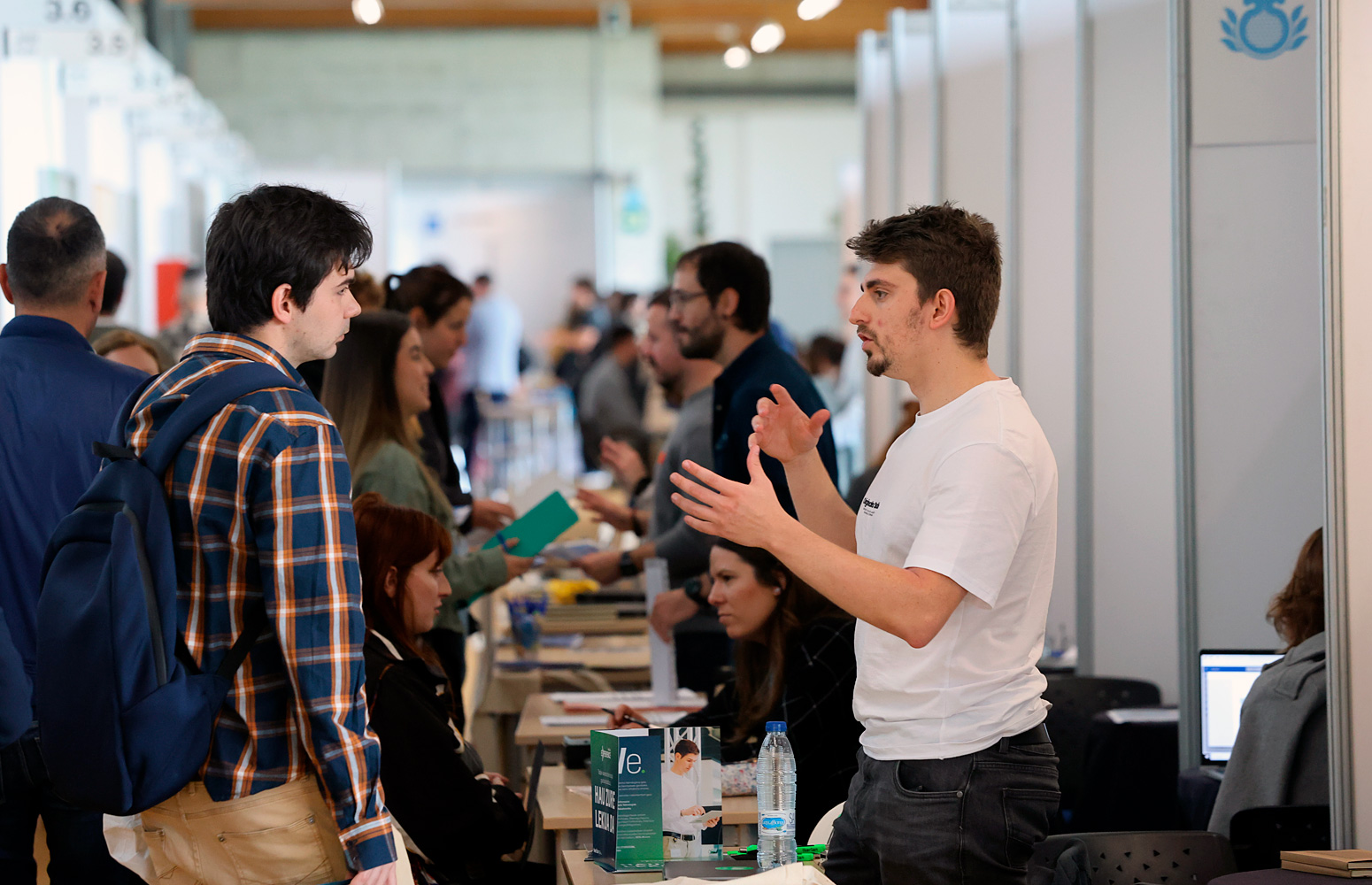Paula Sánchez-Fontecoba, a researcher in the UPV/EHU’s Department of Inorganic Chemistry, has studied new anode materials for sodium-ion batteries and has synthesised a new polymer that could behave both as an anode and as a binding agent.
-

Azukrea eta edulkoratzaileak. Zer jakin behar dut?
-

Athletic zuri ta gorria, zu zara nagusia, baina zertan? Gizonezko futbol profesionalaren gaitasun (im)mobilizatzaileari buruzko hausnarketa soziologikoa
-

Unibertsitateko elikadura ingurune osasungarriago baten bila
-

Iñigo Ugedo Vicario: «Modu aktiboan parte hartuko dugu unibertsitateko aldaketa prozesuetan»
-

UPV/EHUko Gobernu Kontseiluak “Palestina laguntzeko manifestua Gazako hondamendi humanitarioaren aurrean” izeneko adierazpena onartu du
New materials are developed for next-generation batteries
A study by the UPV/EHU-University of the Basque Country confirms that sodium-ion batteries offer sufficient advantages to lead the next generation of batteries for large-scale storage purposes
- Research
First publication date: 11/01/2018

The relentless increase in energy consumption, mainly based on fossil fuels, is causing serious environmental problems. The alternative could be to use renewable energy sources, but their intermittency hampers their use; so what is becoming increasingly necessary are electricity storage devices. Electrochemical storage systems in general and batteries in particular are emerging as the best solution for this problem. “Since lithium-ion (Li-ion) batteries began to be marketed, they have been the predominant technology on the market. Yet sodium-ion (Na-ion) batteries have become an alternative to Li-ion technology for stationary applications in which the weight of the device is not a major consideration because of the low cost of sodium compared with lithium, and the fact that it is more plentiful and its distribution more homogeneous,” said Paula Sanchez, the author of the study.
Despite the fact that sodium has chemical properties similar to those of lithium, the Li-ion technology cannot be directly transferred. That is why it is necessary to look for new compatible materials for sodium batteries. The research by the UPV/EHU has focussed specifically on anode materials for batteries of this type.
A ground-breaking, two-in-one material
On the one hand, hard carbon materials originating from lignin, a non-edible biopolymer present in plants, were developed in this work. To synthesise these materials, lignin was isolated from black liquor, a waste product of the paper industry. The optimisation of the synthesis was geared towards improving the electrochemical properties of the carbons by improving their purity. To do this, various characterisation techniques were used to correlate the physical and chemical properties of the carbon materials with their electrochemical properties. And the fact is that, according to Sánchez, given the low cost of their parent material, ease of synthesis, absence of toxicity and relatively high electricity storage capacity, “hard carbons have emerged as promising anode materials for sodium-ion batteries”.
Low-cost, polymer anode materials that are easily synthesised and are safe have also been developed. Furthermore, they offer the great advantage of potential use as a binding agent. “When a battery is developed on an industrial scale, the electrode needs to have good mechanical properties. That is why a binding agent is usually added. Although this is necessary, it also contributes towards the weight of the battery and causes the energy density of the battery to be lower,” explained Sánchez. That is why an attempt is made at all times to reduce that content as far as possible. In this work “we managed to develop a ground-breaking material, a polymer binding agent, which despite producing a certain level of weight in the battery is also capable of inserting the sodium ions, in other words, it also functions as an anode so that the excess weight is partly offset by the extra capacity provided by the new polymer,” added Paula Sánchez.
In view of the results obtained, the researcher added that “the vast majority of the scientific community is now involved in studying sodium-ion batteries that could compete within a short space of time with the lithium-ion ones already being marketed for stationary applications”.
Additional information
This research was conducted within the framework of the PhD thesis by Paula Sánchez-Fontecoba (Barakaldo, 1987. Entitled Advanced anode materials for sodium ion batteries, it was supervised by Dr Teófilo Rojo, Scientific Director of CIC Energigune and Professor of the UPV/EHU’s Department of Inorganic Chemistry, and Dr Elizabeth Castillo, post-doctoral researcher at the University of Cambridge.



